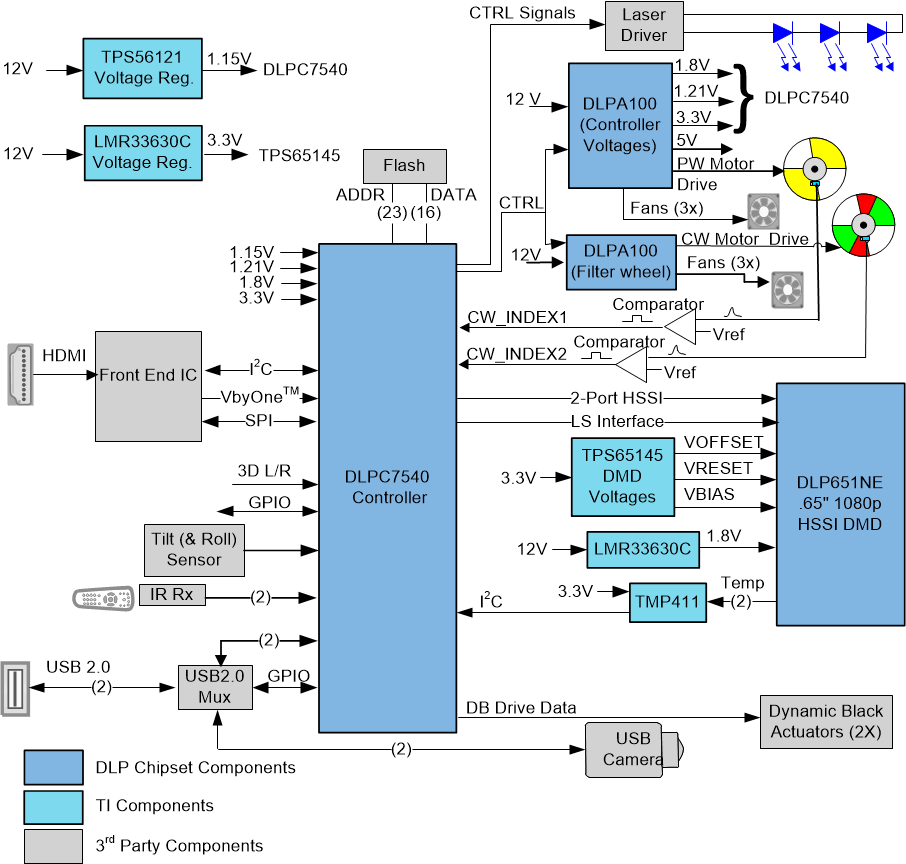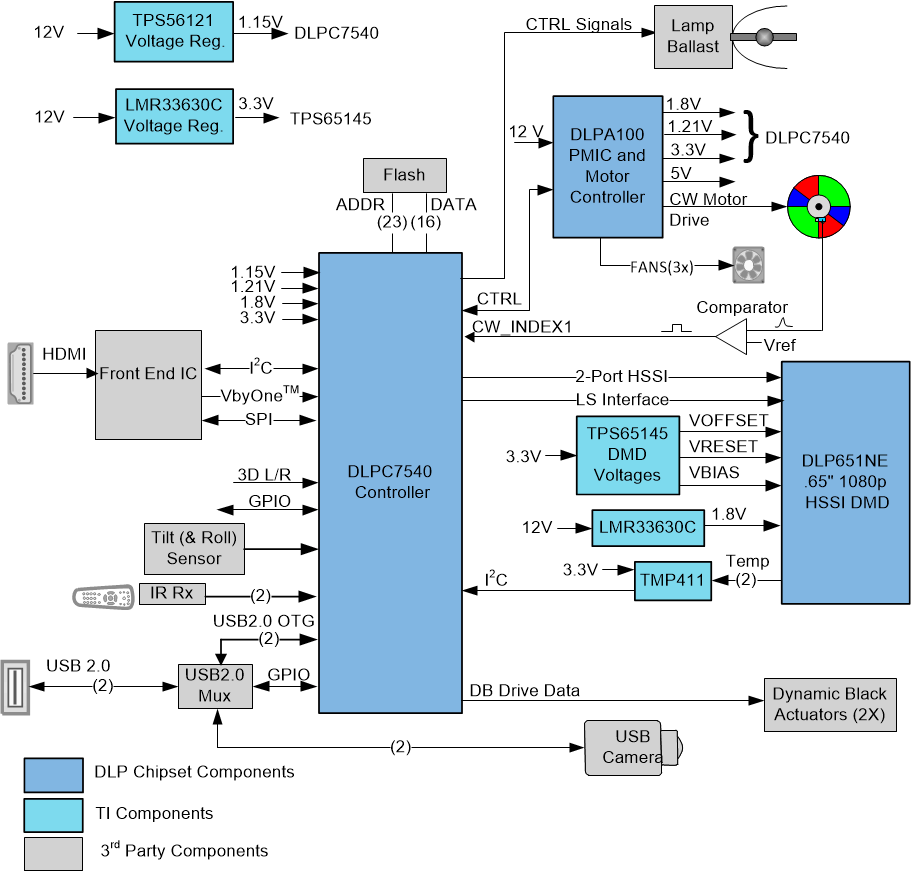DLPS210A March 2021 – May 2022 DLP651NE
PRODUCTION DATA
- 1 Features
- 2 Applications
- 3 Description
- 4 Revision History
- 5 Pin Configuration and Functions
-
6 Specifications
- 6.1 Absolute Maximum Ratings
- 6.2 Storage Conditions
- 6.3 ESD Ratings
- 6.4 Recommended Operating Conditions
- 11
- 6.5 Thermal Information
- 6.6 Electrical Characteristics
- 6.7 Switching Characteristics
- 15
- 6.8 Timing Requirements
- 17
- 6.9 System Mounting Interface Loads
- 19
- 6.10 Micromirror Array Physical Characteristics
- 21
- 6.11 Micromirror Array Optical Characteristics
- 23
- 6.12 Window Characteristics
- 6.13 Chipset Component Usage Specification
- 7 Detailed Description
- 8 Application and Implementation
- 9 Power Supply Recommendations
- 10Layout
- 11Device and Documentation Support
- 12Mechanical, Packaging, and Orderable Information
Package Options
Mechanical Data (Package|Pins)
- FYP|149
Thermal pad, mechanical data (Package|Pins)
Orderable Information
8.2 Typical Application
The DLP651NE DMD combined with DLPC7540 digital controller and a power management device provides full 1080p resolution for bright, colorful display applications. A typical display system using laser phosphor illumination combines the DLP651NE DMD, DLPC7540 display controller, TPS65145 voltage regulator and DLPA100 PMIC and motor driver. Figure 8-1 shows a system block diagram for this configuration of the DLP 0.65” 1080p chipset and additional system components needed. See Figure 8-2 for a block diagram showing the system components needed along with the lamp configuration of the DLP 0.65” 1080p chipset. The components include DLP651NE DMD, DLPC7540 display controller and DLPA100 PMIC and motor driver and a TPS65145 PMIC.
 Figure 8-1 Typical 1080p Laser Phosphor Application Diagram
Figure 8-1 Typical 1080p Laser Phosphor Application Diagram Figure 8-2 Typical 1080p Lamp Phosphor Application Diagram
Figure 8-2 Typical 1080p Lamp Phosphor Application Diagram